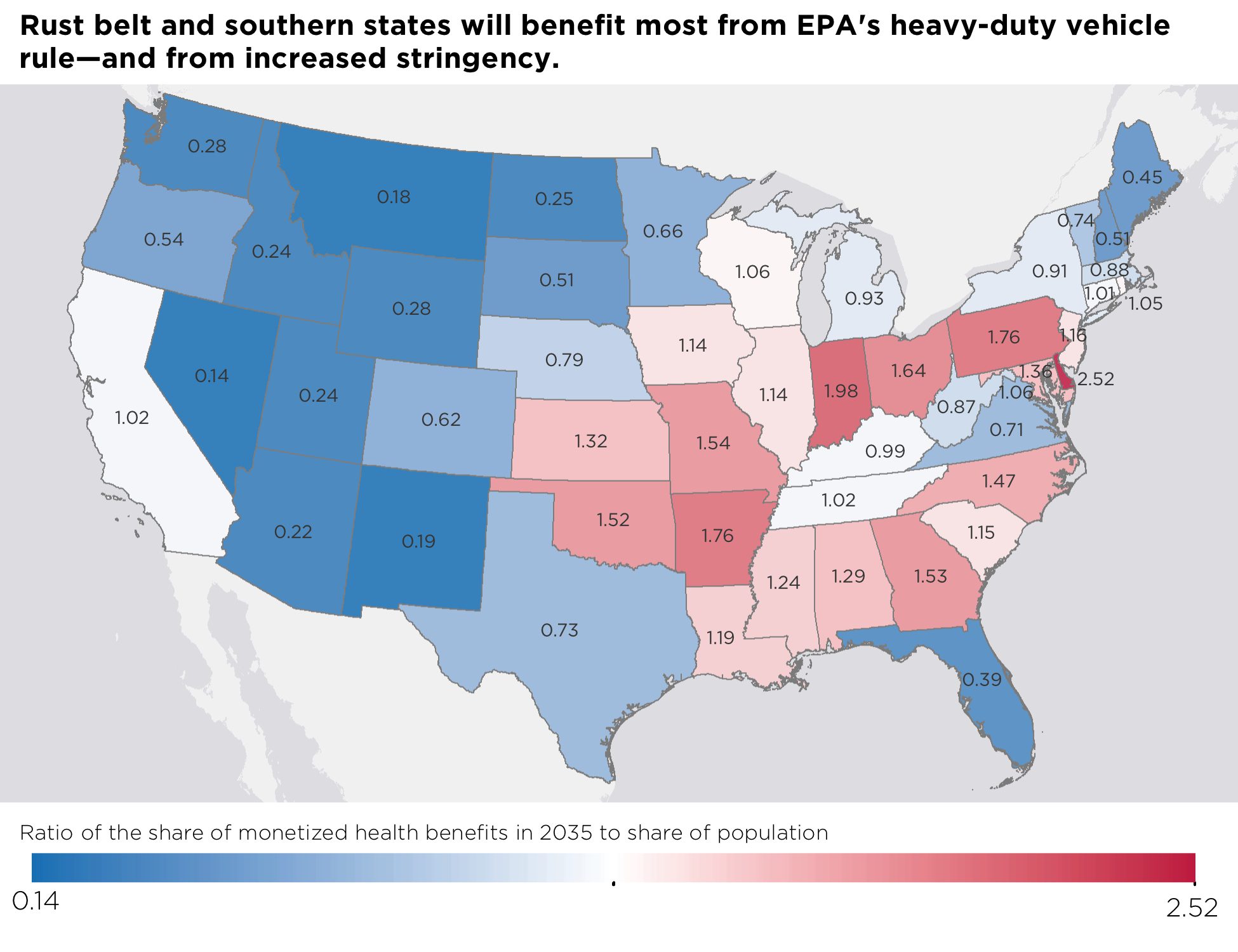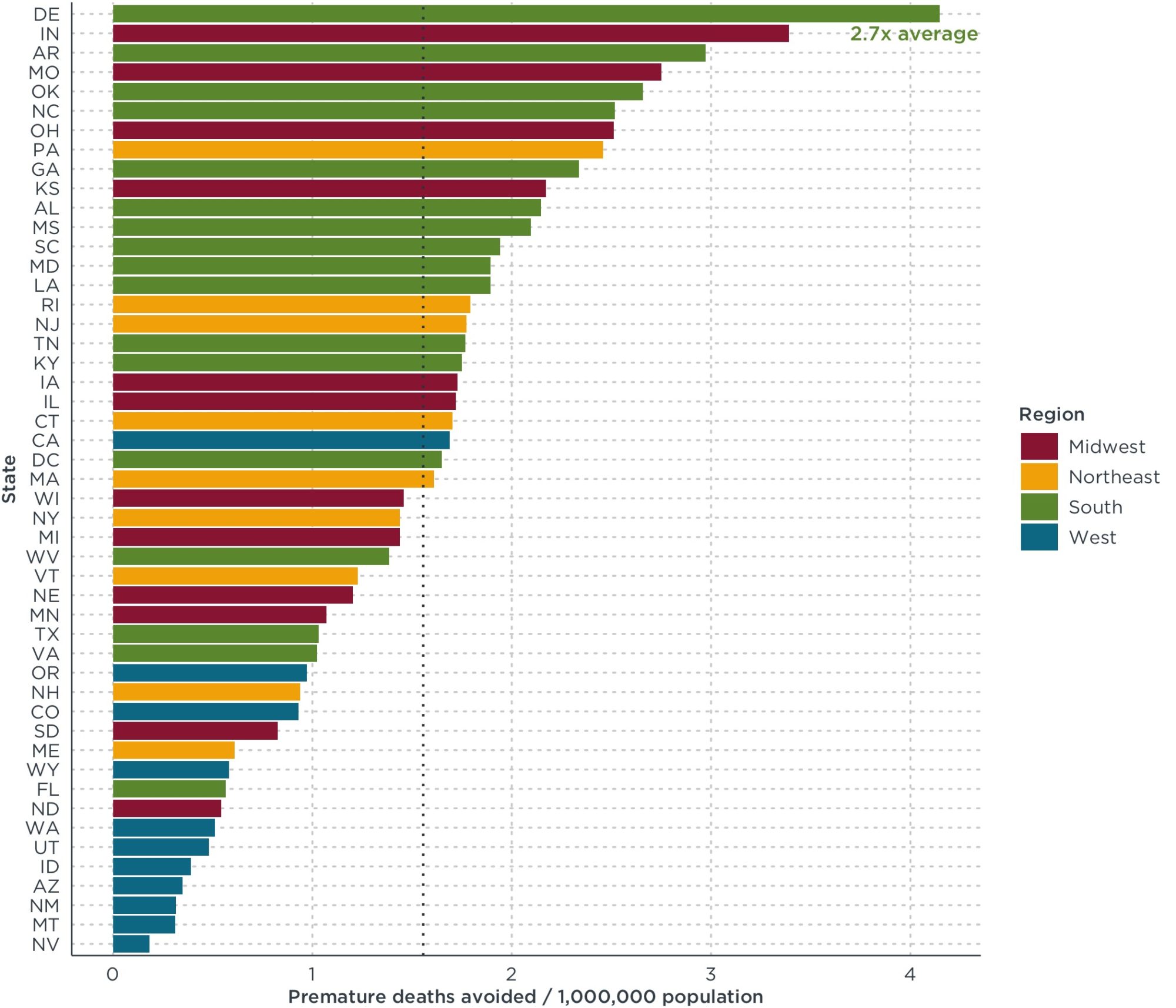Blog
Will EPA’s proposed clean truck emission standards deliver environmental justice in U.S. states?
Years of research have shown the severe health impacts of diesel truck emissions and their disproportionate impact on people of color. Communities living near truck traffic are all too familiar with the respiratory, cardiovascular, and other health issues that result from breathing polluted air. Although pollutant emissions from trucks have declined since the introduction of the U.S. Environmental Protection Agency (EPA) 2010 standards, trucks remain a significant source of air pollution and inequitable health impacts.
The Biden administration has committed to addressing current and historic environmental injustices, and for the first time in 20 years, EPA is updating emission limits for heavy-duty engines. This rare opportunity to implement strong emission standards will impact air quality and health for decades to come. It is also a chance to advance environmental justice by adopting the most stringent possible rule to address the disproportionate impacts of diesel trucks and alleviate health burdens.
EPA released their proposed rule in March of this year, putting forward two options to limit emissions of nitrogen oxides (NOx), starting with trucks manufactured in 2027. We analyzed the health benefits and environmental justice implications of the more stringent option, Option 1, finding that as soon as 2035, the rule will result in over $4.8 billion in monetized health benefits annually.
Emission reductions from a strong HDV rule will especially benefit groups who are disadvantaged in terms of particulate matter (PM) exposure and traffic proximity, as defined by the Climate and Economic Justice Screening Tool. Under EPA’s Option 1, these groups will see some of the largest benefits, experiencing 26%–27% greater than average reductions in PM exposure. These communities account for a small fraction of the total U.S. population (<4%) but their racial makeups reflect the inequities in traffic-related environmental hazards: more than 80% of the residents of these communities are people of color. Adopting a less stringent option, such as EPA’s proposed Option 2, would reduce benefits to these communities and fail to adequately address the disparate impacts of diesel trucks.
While all states will benefit from more stringent emission standards, states in the Midwest and South are projected to benefit the most relative to their population size, as shown in Figure 1. These are primarily states with high-traffic interstates and large populations living in close proximity to diesel truck-related pollution.

Figure 1. The ratio of each state’s share of monetized health benefits in 2035 under EPA’s Option 1 compared to each state’s share of national population.
Benefits to environmental justice communities also vary by state, as shown in Figure 2, with some of the largest benefits going to states currently with significant exposure disparities. These communities are defined by select EPA environmental justice criteria such as income, race, PM exposure, and air pollution-related disease. Several states ranking highest in terms of benefits to environmental justice communities from EPA’s Option 1 are states that have significant racial disparities in diesel-related PM exposure. Indiana, Missouri, Ohio, and Pennsylvania are all states where people of color are exposed to 24%–35% more PM from diesel trucks compared to the state averages.

Figure 2. Health benefits of EPA’s proposed Option 1 to populations meeting any environmental justice criteria in 2035 by state, in annual premature deaths avoided per 1,000,000 population.
The health equity implications of this ruling extend beyond just NOx emissions—ambitious climate mitigation efforts are also needed to limit increases in inequitable health burdens. Communities are already feeling the effects of climate-related weather disasters, and overall health impacts of climate change are also projected to increase. Under a 2°C global warming scenario, Black children are 34% more likely to live in areas with the highest projected increases in childhood asthma incidences due to changes in weather patterns. These areas are highly concentrated in Southern states, where diesel trucks already have disproportionate impacts on air pollution and health. Significant greenhouse gas reductions are needed to limit these additional climate-related health effects as much as possible. California and 5 other states have adopted zero-emission sales requirements through the Advanced Clean Trucks rule and an additional 11 states plus Washington DC have signed onto a Memorandum of Understanding, committing to accelerating the transition to zero-emission trucks. However, these state level policies alone aren’t enough to reach climate goals—a strong federal policy is also needed. The proposed rule includes updates to the current Phase 2 greenhouse gas emission standards, but more ambitious action is needed. EPA’s heavy-duty vehicle rule must also set zero-emission vehicle targets to have a chance at limiting warming to 2°C.
EPA’s rule, scheduled to be finalized later this year, will have a huge impact on air quality and health across the nation. Communities exposed to the highest levels of diesel truck-related air pollution will be most affected by this decision. Now is the time to take decisive action toward environmental justice and implement stringent heavy-duty NOx limits and zero-emission sales targets to protect public health.
